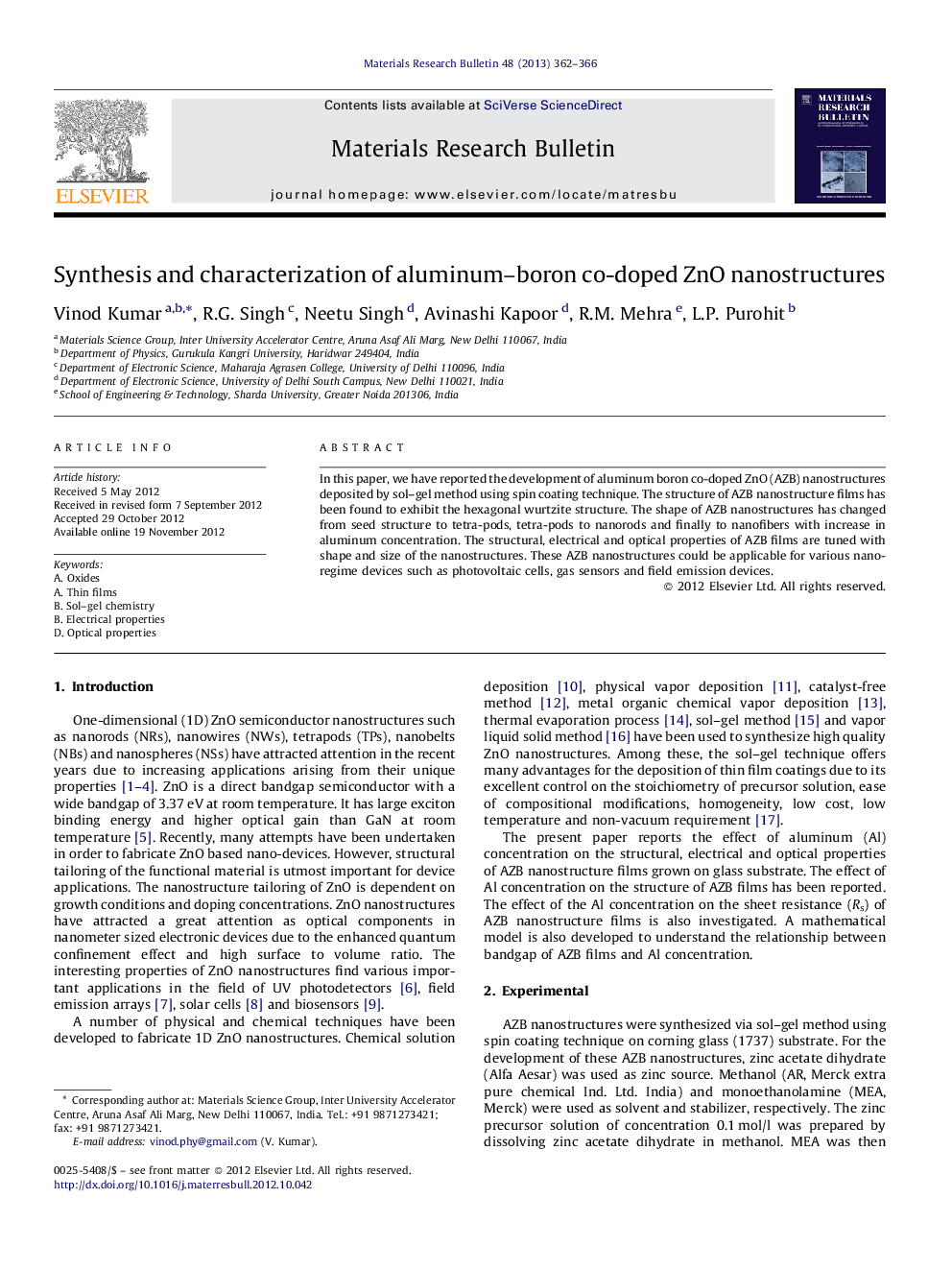| Article ID | Journal | Published Year | Pages | File Type |
|---|---|---|---|---|
| 1489840 | Materials Research Bulletin | 2013 | 5 Pages |
In this paper, we have reported the development of aluminum boron co-doped ZnO (AZB) nanostructures deposited by sol–gel method using spin coating technique. The structure of AZB nanostructure films has been found to exhibit the hexagonal wurtzite structure. The shape of AZB nanostructures has changed from seed structure to tetra-pods, tetra-pods to nanorods and finally to nanofibers with increase in aluminum concentration. The structural, electrical and optical properties of AZB films are tuned with shape and size of the nanostructures. These AZB nanostructures could be applicable for various nano-regime devices such as photovoltaic cells, gas sensors and field emission devices.
Graphical abstractIn this paper, we have reported the development of aluminum boron co-doped ZnO (AZB) nanostructures deposited by sol–gel method using spin coating technique. The structure of AZB nanostructure films has been found to exhibit the hexagonal wurtzite structure. The shape of nanostructures has been changed from seed structure to tetra-pods, tetra-pods to nanorods and finally nanorods to nanofiber with variation in Al concentration. The structural, electrical and optical properties of AZB nanostructures are tuned with shape and size of the nanostructures. The effect of Al concentration on the resistivity (ρ), carrier concentration (n) and mobility (μ) of nanostructure films is shown in graph below. A minimum resistivity of 6.8 × 10−4 Ω cm is obtained in AZB films at doping concentration of B 0.6 at.% and Al 0.4 at.% with a sheet resistance of 24 Ω/□ and transmittance of ∼88% for nanorods structure. These nanostructures could be applicable for a various nano-regime devices such as photovolatics, gas sensing and field emission device.Figure optionsDownload full-size imageDownload as PowerPoint slideHighlights► Synthesis of Al and B co-doped ZnO (AZB) nanostructures. ► Minimum resistivity (ρ) of 6.8 × 10−4 Ω cm in AZB films. ► Minimum sheet resistance (Rs) 24 Ω/□ in nanorods (NRs). ► Maximum transmittance ∼88% in NRs. ► Application in nano-electronic devices.
